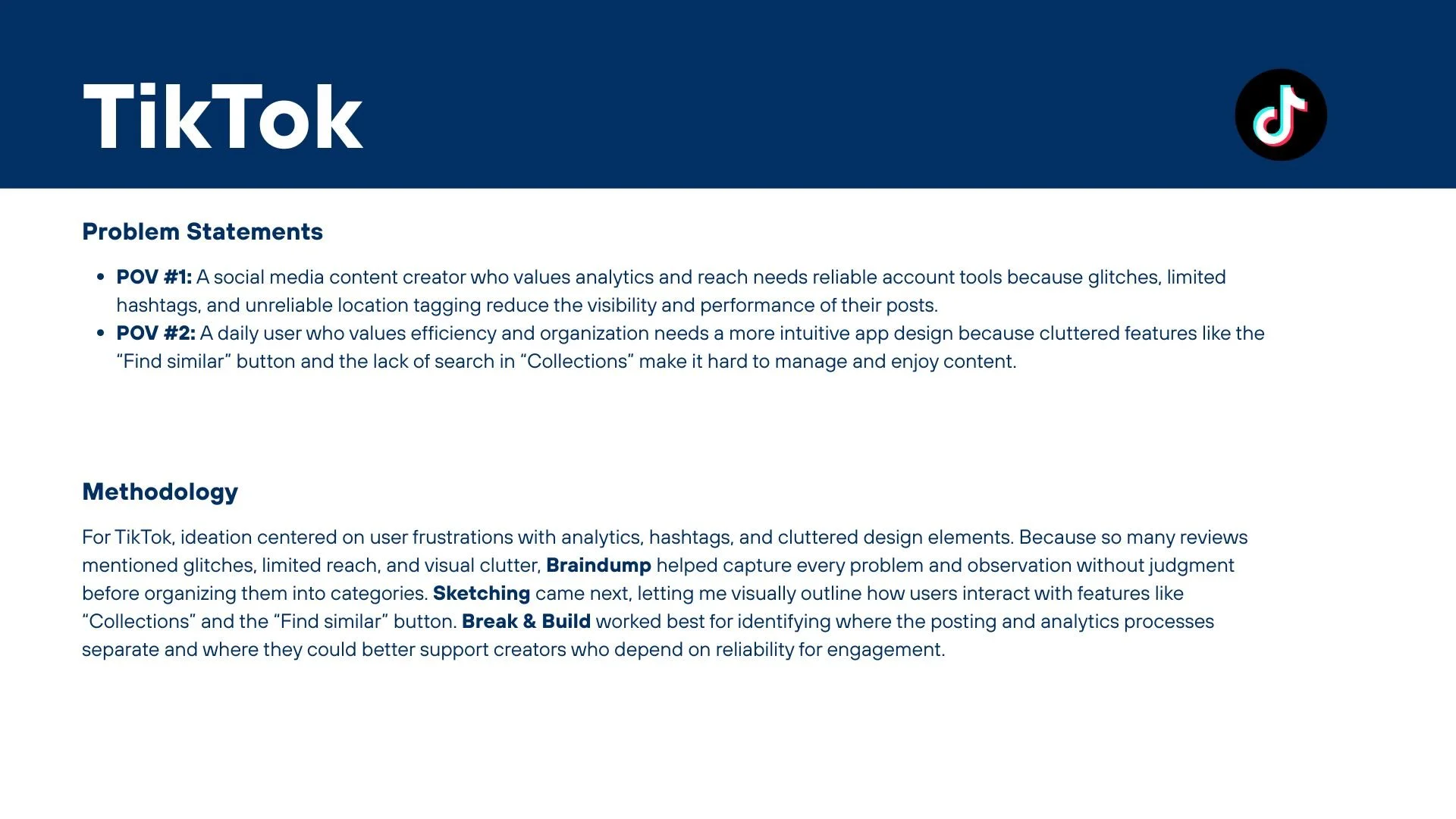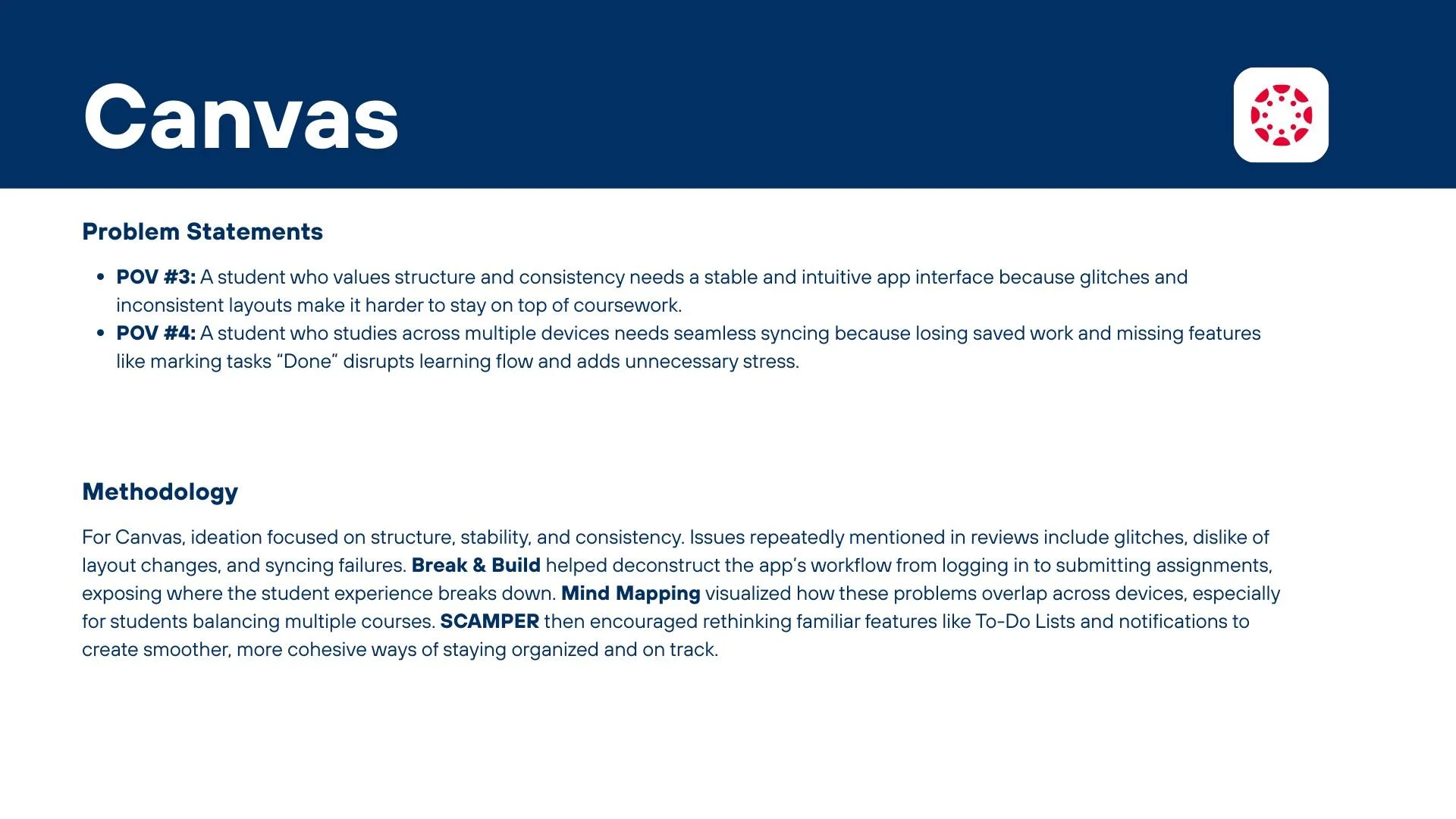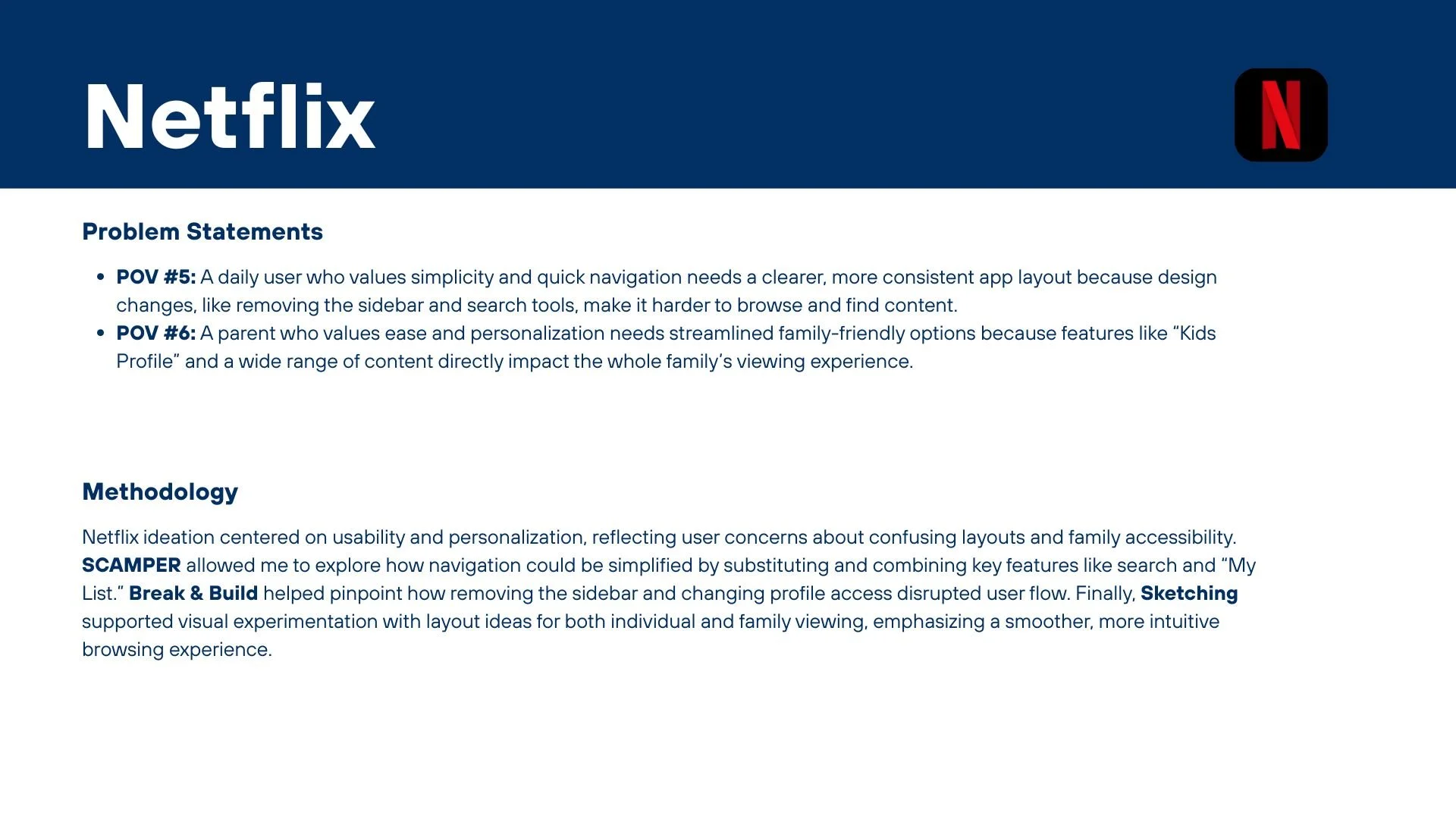Ideation Techniques Through POV Statements
Using the six Points of View (POVs) from TikTok, Canvas, and Netflix, I explored different ideation techniques to analyze user feedback and identify how each platform could enhance the user experience. Drawing on the readings "Introduction to the Essential Ideation Techniques,” "Ideation for Everyday Design Challenges," and more, I combined analytical and visual methods to generate structured yet creative solutions. The readings emphasized quantity over quality, and curiosity over non-judgment, reminding me that the best ideas often emerge from iteration and exploration rather than a single “right” answer.
“The benefits of parallel design have long been documented and quantified: we should not limit ourselves to a single design solution and leave most of the design space unexplored.”
TikTok: Fast Ideas for a Fast-Paced Platform
TikTok POV Statement and Methodology
For TikTok, user feedback revolved around analytics, hashtags, and cluttered design elements. I began with a Braindump to capture every frustration without judgment. Writing freely helped me see patterns in how creators struggle with limited reach and unreliable tagging. Sketching followed, visualizing a unified place for content creator statistics, and adding features to the Collections. Finally, Break & Build allowed me to separate and reconstruct the posting and analytics workflow, revealing where features could better support creators seeking reliability and engagement. These techniques fit TikTok’s dynamic environment, balancing rapid idea generation and structured refinement.
Canvas: Structure, Stability, and System Thinking
Canvas POV Statements and Methodology
For Canvas, ideation centered on structure and consistency, issues that dominate user reviews about glitches, layout confusion, and syncing failures. Break & Build helped me deconstruct the student struggles, identifying where inconsistent designs interrupt learning flow. Mind Mapping visualized the relationships between layout, notifications, and device syncing, making it easier to see how one small issue impacts the entire user experience. To expand on these insights, I used SCAMPER to try and improve functionality through substitution, combination, modification, and adaptation. As discussed in Essential Ideation Techniques, this kind of lateral thinking pushes ideas beyond surface-level fixes to more transformative solutions.
Netflix: Navigating Design Change and Family Experience
Netflix POV Statements and Methodology
Netflix’s challenges focused on navigation and personalization, with users frustrated by layout changes and limited family controls. With SCAMPER, I used its action prompts to question how existing tools—search bar, filters, and profiles—could be simplified. Break & Build clarified which recent design updates disrupted the browsing experience, allowing me to rebuild the app around ease and clarity. Lastly, Sketching turned those concepts into visual prototypes, illustrating cleaner navigation and improved profile options. These methods worked together to merge creative exploration with practical usability, reflecting Netflix’s dual role as both a design-driven and family-oriented platform.
Conclusion
Across all three apps, Break & Build stood out as the most useful technique. It forced me to slow down and examine where each system fails before jumping to new ideas. SCAMPER followed closely because it encouraged challenging what exists rather than replacing it entirely.
The most promising ideas include integrating TikTok’s creator analytics with post creation, standardized Canvas course layouts across devices, and simplifying Netflix’s navigation. Each idea reflects a real user's frustration, showing how structured ideation can turn problems into possibilities.





